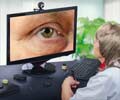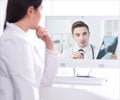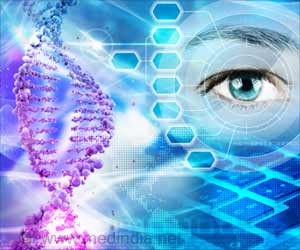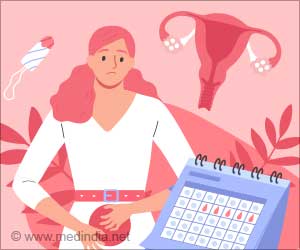Primary health care is a cause of concern across most developing nations. Given the massive population in India, there is always a dearth of medical practitioners, which makes it highly challenging to offer primary health care to people in both urban and rural areas. Hence, in an attempt to bridge the gap between doctors and people in need of medical attention, health kiosks appear to serve as a solution. Ram Prabhu, cofounder and technical director of eHealthAccess, formerly Dial Our Doctor, explains the benefits of health kiosks.
Q. How can primary health care be availed with the use of technology?A. Primary health care consists of diagnostics, which includes checking pulse, heartbeat, and functioning of other vital organs before a doctor can prescribe medication or treatment. That aside, when a person walks into a medical facility the person wants to meet the doctor, in person, to conduct the diagnoses. However, the disparity in the ratio between doctors and patients makes it impossible for doctors in urban areas to meet with people in remote locations. Therefore, a health kiosk connects the doctor to the patient, where the patient is virtually able to consult a real doctor and use the facilities inside the kiosk to have the primary diagnoses carried out. Each kiosk is equipped with facilities to check the heartbeat, pulse and to examine inside the ears and eyes.
Q. With what technology does a health kiosk operate?
A. Cellular phones and internet use at least a 2G signal, which is one of the reasons for such explosion in communication even in remote locations. So, the same technology is used to leverage health care where a doctor can be anywhere in India and yet be able to reach people be it in a North Eastern city or a South Indian village. Doctor and patient come together in a kiosk, which is almost similar to a doctor’s consultation room, except the virtual doctor is on the other side of the monitor. Rest of the basic amenities to check blood pressure, heartbeat, pulse rate, and external organs are available in the kiosk. The otoscope in the kiosk, which is microscopic in nature, gives focus on the area used on and sends visuals for the doctor.
Q. Who is the target population for a health kiosk?
A. Concerning the corporate sector, there is a legal mandate that an office has in-house medical personnel when people are working in the concern. When the presence of a general physician becomes difficult, the odds of availing a specialist are even more complicated. A health kiosk can alleviate the complication by providing close to 10 specialists in an office. Rural India and government can use technology and employ the kiosks in the remote locations to bridge the gap between doctors and patients living in far-flung areas.
A. The technology for the health kiosk uses a low power battery. Basic personal computer or Intel core will back the services. There are also two mediums used: the touch screen and the LCD/LED monitors. Since LCD/LED consumes more electricity, in case of power failure the inverter and UPS connected to the PC will enable the functioning. With 3 hours of electric power, the kiosk can operate for 24 hours. Assuming there is no power supply at all there is still solar power from which a battery gets charged. The connecting system relies on 2G and even if that fails, the audio system will continue to operate. In the absence of audio for any reason, the callback feature will come in handy. The system uses Asterix (an automated call back facility) to call the patient’s mobile number. If all other means lead to disconnection, then the doctor will call back the patient.
A. If the medical facility is available and a person is comfortable with meeting the doctor, it is ideal for the person to continue it. However at least 10 years ago, people preferred waiting in a queue to meet with the bank employees while ATMs were emerging amidst much skepticism. Today banks are boasting of having more ATM counters than branches. Similarly, the kiosks will also help people to avail primary health care at any hour according to one’s convenience. These kiosks are ideal for those in the corporate field that are used to ‘chatting’ to get things done. As for the rural areas, a person in the distant location can reach specialists such as a dermatologist or a Naturopathy or Homeopathy practitioner. If the doctor prescribes tests, people can get the tests done at another facility.
Q. What are the other advantages of the health kiosks?
A. After a heart surgery, a person may need to visit the doctor for regular checks; such consultations can be done at the kiosks. Secondly, the bandwidth to operate the video is very low. Thirdly, the kiosk manned by trained support-staff, who operates the system and calms agitated patients, such as cases of first time pregnancy. Fourthly, the medical reports are currently available in five languages, English, Hindi, Tamil, Telugu, and Malayalam. Finally, while patients are waiting for their results, they have opportunities to be informed about general health by filling surveys, watching video presentations, and read articles that engage people. Survey results can help government to pay attention to localities that need vaccination.
Q. How would the system maintain hygiene and privacy?
A. The support staff maintains hygiene where each customer will have the equipments sanitized with covers. There is no invasive procedure in any form such as pricking or injection or insertion. As for maintaining privacy, the kiosk is an enclosed space. Personal health records are private to customers with two levels of authentication. A customer can set the security and the password protects the records for three hours. The doctor receives the password through text message (SMS). Therefore, the text message serves as authentication where the customer is in complete control of the security. In rural areas, the phone number serves as the key. The customer has to show the key to the support staff. The key can be used only once. If the key is lost then a new key has to be generated.
The price for using the health kiosks varies from a general physician to a specialist. Apart from the pricing, among the many efforts taken towards genuine efforts to provide overall medical services and with as much uniformity possible, the health kiosks sound promising.
Source-Medindia











